Early Warning and Early Action —— Talking about the Family of Meteorological Early Warning
The theme of World Meteorological Day in 2022 is "Early warning, early action: meteorological, hydrological and climatic information to help prevent and reduce disasters".
When disasters come, being prepared and taking action at the right time and place can effectively prevent and mitigate disasters and protect people’s lives and property. Meteorological disaster warning information is the most important warning light before meteorological disasters come, and it is an essential message tree for disaster prevention and mitigation.
What are the meteorological disaster warnings? What do different colors represent? Where do we get the early warning information? Today, I will take you to explore the early warning of meteorological disasters and the stories behind it.
14 categories and 4 levels
At present, the Central Meteorological Observatory has issued 14 kinds of meteorological disaster warnings under the authorization of China Meteorological Bureau.
According to the possible harm and urgency of meteorological disasters, the meteorological disaster warning is set to four levels: blue, yellow, orange and red, which respectively represent ordinary, heavy, serious and particularly serious. Some warnings have only one, two or three levels.

With the gradual improvement of meteorological disaster risk prevention system, the ability of meteorological disaster monitoring, forecasting and early warning has been significantly improved. In the past five years, the National Early Warning Information Publishing Center has published an average of 195,000 meteorological warning messages every year, with rainstorm, fog and high temperature being the most published meteorological disaster warnings in these five years.
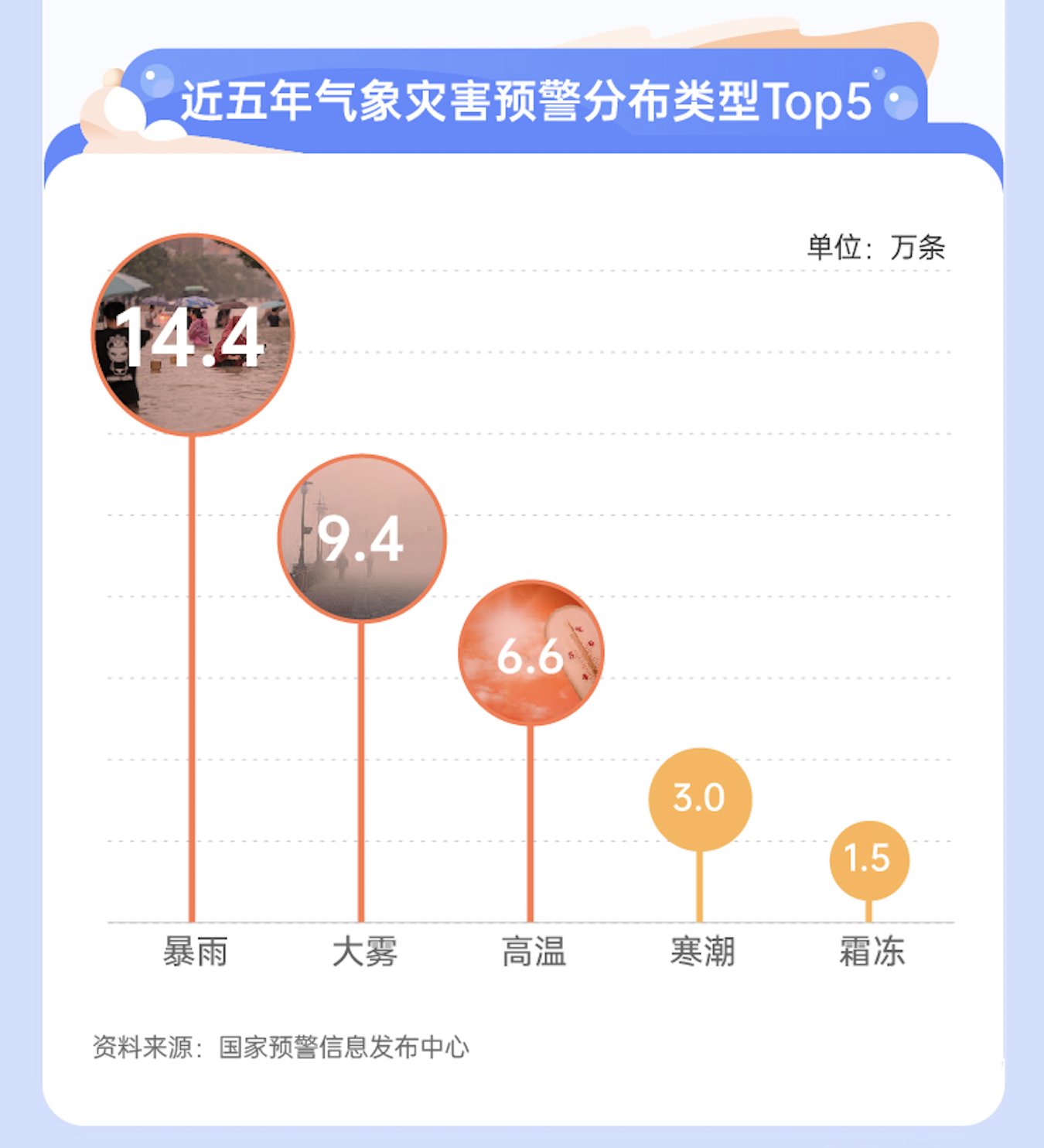
Where does meteorological warning come from?
Step 1: Observe-See the atmosphere clearly.
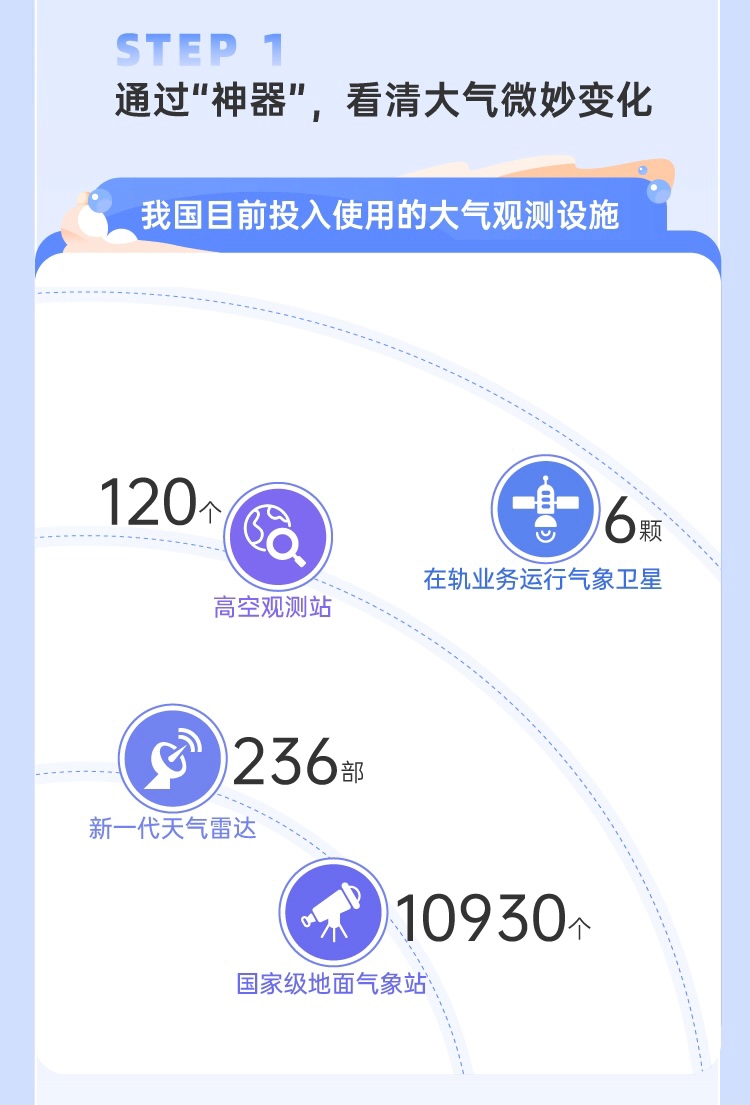
Step 2: Forecast-man-machine "diagnosis"
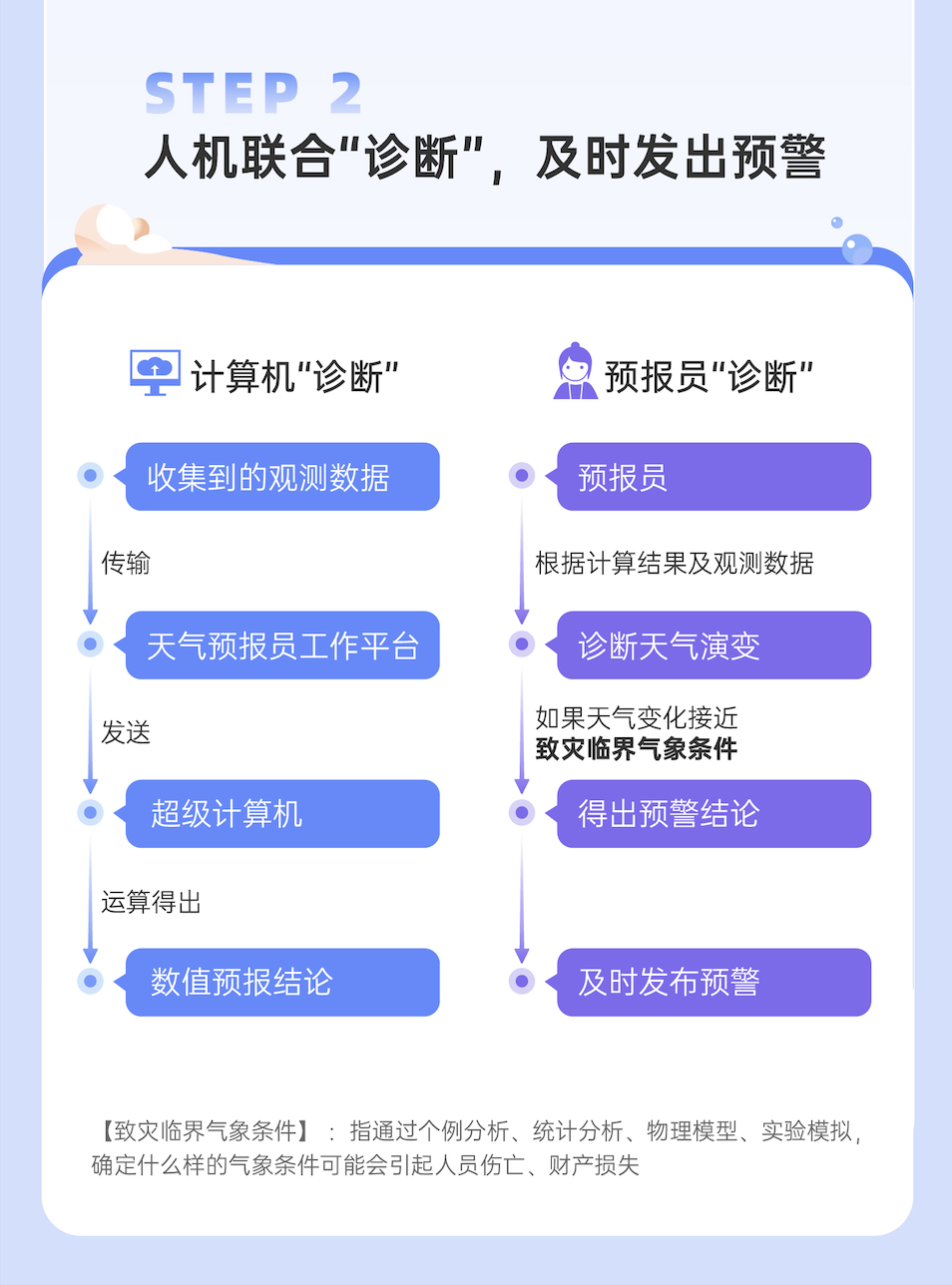
At this point, a meteorological disaster warning information was born.
Who will receive the meteorological disaster warning information at the first time? How fast is it released?

How does the public get early warning information?
Convenient, efficient and wide-coverage information acquisition channels are one of the prerequisites for "early action". The data shows that SMS, radio, TV, Internet or smart terminals are all convenient channels for the public to obtain early warning information. With the cooperation of multi-channel publishing means, the comprehensive public coverage rate of early warning reached 92.7%.
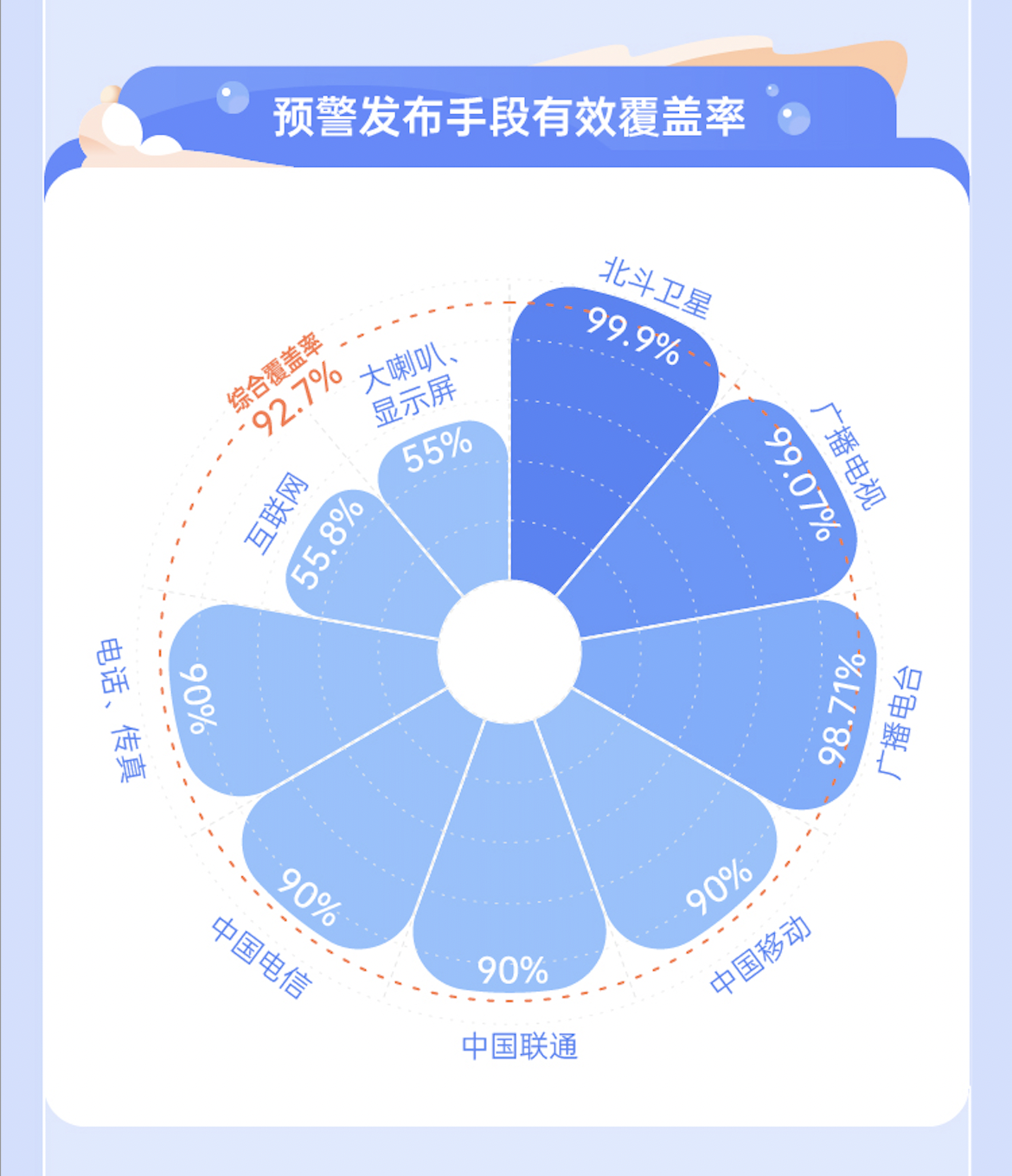
It is worth noting that China has a vast territory and abundant resources, and the climate is complex and diverse. There are typhoons along the coast and sandstorms in the northwest. The same 50 mm rainfall in summer brings coolness to the coastal areas, but it may bring disasters to the northwest. Therefore, local meteorological departments follow the principle of "localization", issue local early warning signals according to the classification of meteorological early warning and the characteristics of local meteorological disasters. In other words, the early warning signals of meteorological disasters in different places are not completely unified, so we must focus on the early warning information issued by the local meteorological observatory.
What action should we take when we receive the warning signal of meteorological disaster? Different situations have different answers.
Meteorological disaster early warning can be roughly divided into two situations. The blue and yellow warning signals are "early warning", indicating that although it is still relatively calm, the danger may be in front of us; Orange and red warning signal are generally warnings when bad weather is "in progress"-bad weather has happened and may be further upgraded.

Past lives of Meteorological Warning
The development of meteorological disaster early warning also reflects the transformation of China’s characteristic meteorological disaster prevention, mitigation and relief system.
In 1954, the State Council of the Central People’s Government issued the "Instructions on Strengthening the Forecast, Early Warning and Prevention of Severe Weather", and the meteorological disaster warning first appeared in the public eye. At that time, the forecasting and early warning mainly relied on experience, and the means of communication were limited, and the popularity was not high.
At the end of the 20th century, with the progress of atmospheric science, the upgrading of observation methods and the continuous improvement of meteorological science and technology such as monitoring and forecasting, the accuracy of forecasting is getting higher and higher, and early warning is also playing an increasingly significant role.
In April, 2007, China Meteorological Bureau formulated and issued "Measures for Issuing Meteorological Disaster Warning of Central Meteorological Observatory (Trial)", which is applicable to eight types of meteorological disaster warning, divided into orange warning and red warning.
In April 2010, the number of meteorological disaster early warning increased to 13 categories. Each type of meteorological disaster warning has at most four levels, which are expressed in four colors: blue, yellow, orange and red.
In August 2013, a new method for issuing strong convective warning was added. So far, meteorological disaster warning has increased by 14 categories.
In 2015, the National Early Warning Information Release Center was established, and the meteorological disaster warning was issued authoritatively from here.
In December 2018, a new method for issuing sea fog warning was added to the fog meteorological disaster warning.
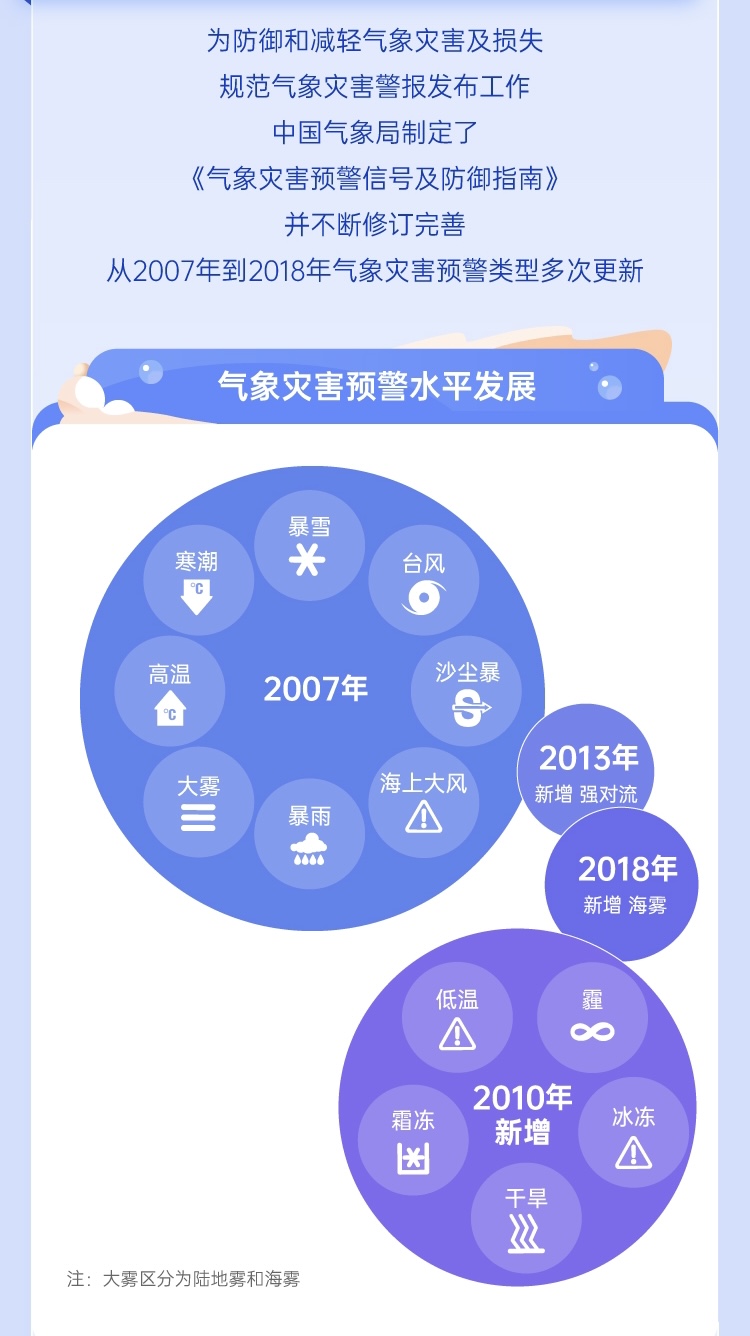
Deep integration and optimization of services needed by people’s livelihood
The national early warning information publishing platform not only publishes 14 kinds of meteorological disaster warnings, but also publishes meteorological disaster forecasting and early warning information jointly carried out by China Meteorological Bureau and relevant departments, so as to fully protect public safety actions.

In recent years, meteorological departments at all levels have actively integrated into and served the construction of a modern economic system, optimized meteorological disaster early warning services needed by people’s livelihood, and cooperated with high-impact industries and departments in depth, so that the "meteorological early warning+"service is closer to the needs of the people.
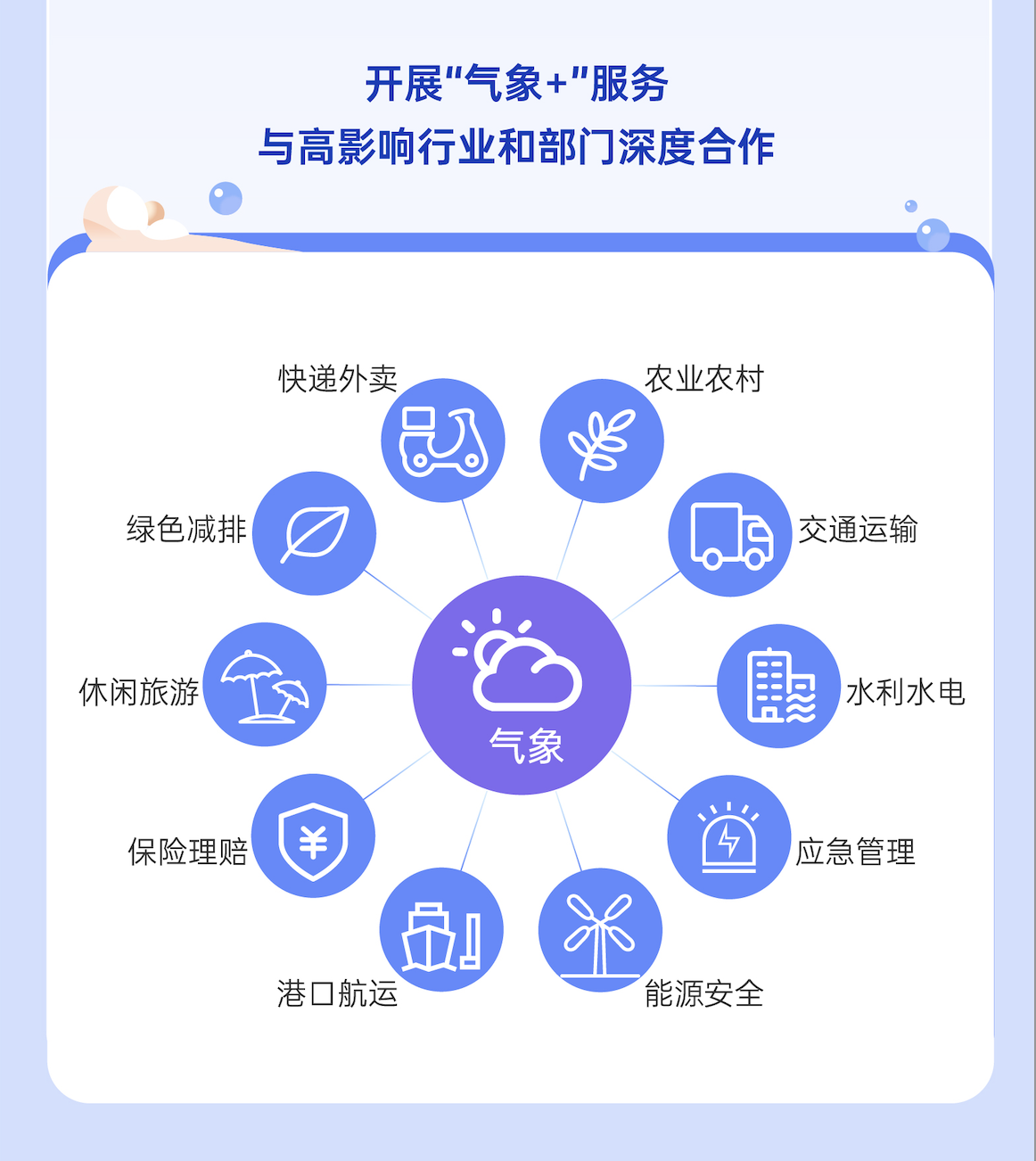
Endeavor, new journey, new era of meritorious service
The Tenth Five-Year Plan for National Meteorological Development proposes to strengthen all-weather and high-precision comprehensive stereoscopic monitoring of meteorological disasters, improve the accuracy of meteorological disaster prediction and early warning, and extend the forecast period of meteorological disasters.

In the future, the early warning of meteorological disasters will focus on improving the accuracy, advance and refinement of early warning of heavy rain and local sudden strong convection.
Pay attention to early warning and predict risks.
Rain or shine, we are always by your side.
China Meteorological Bureau Meteorological Propaganda and Popular Science Center (China Meteorological News Agency) National Early Warning Information Publishing Center jointly produced.
Expert Consultant: Chen Jin, Deputy Chief of Public Meteorological Service Center.
Planning: Yan Hong Yan Xin
Cartography: National Early Warning Information Release Center
(Editor: Yan Hong)